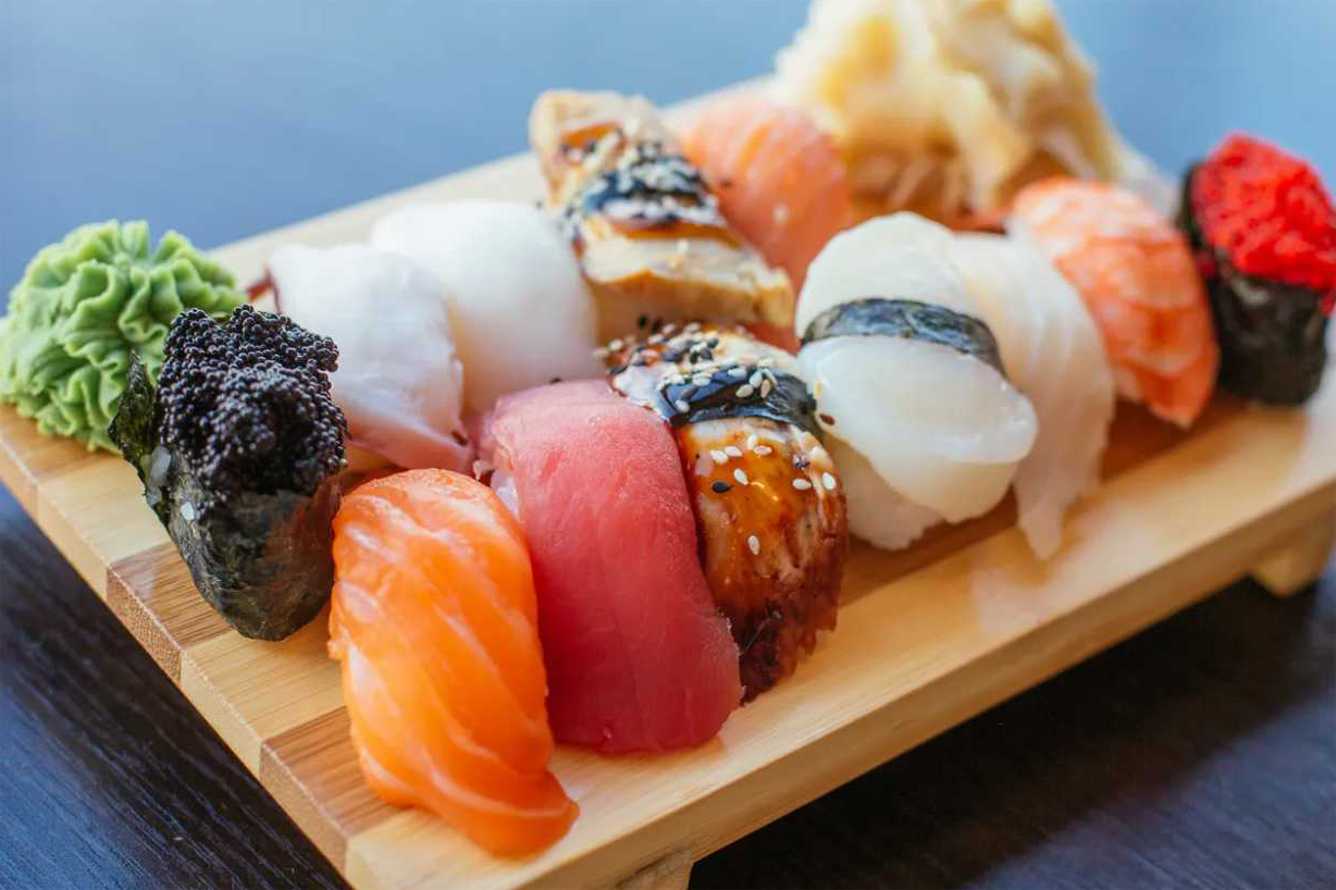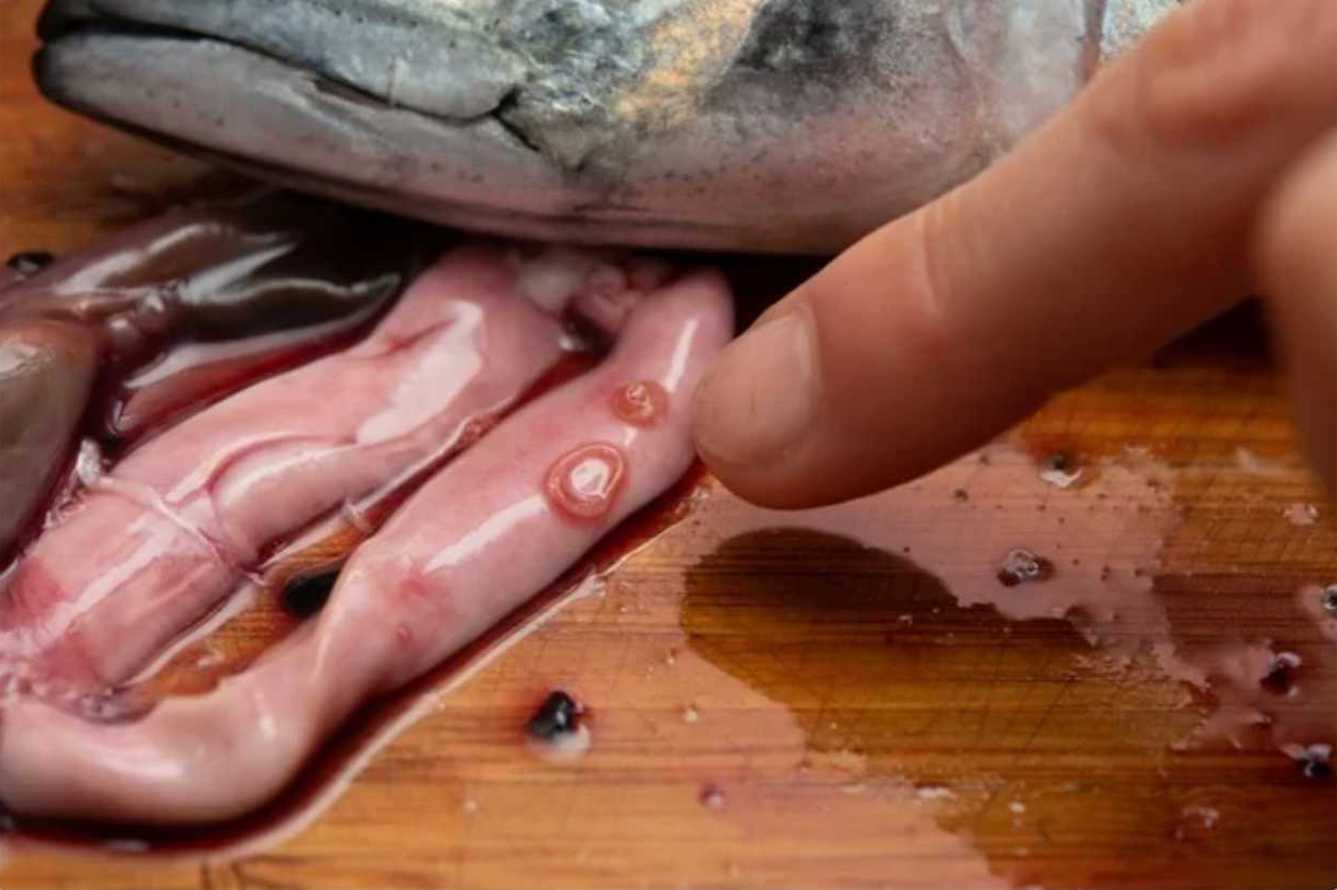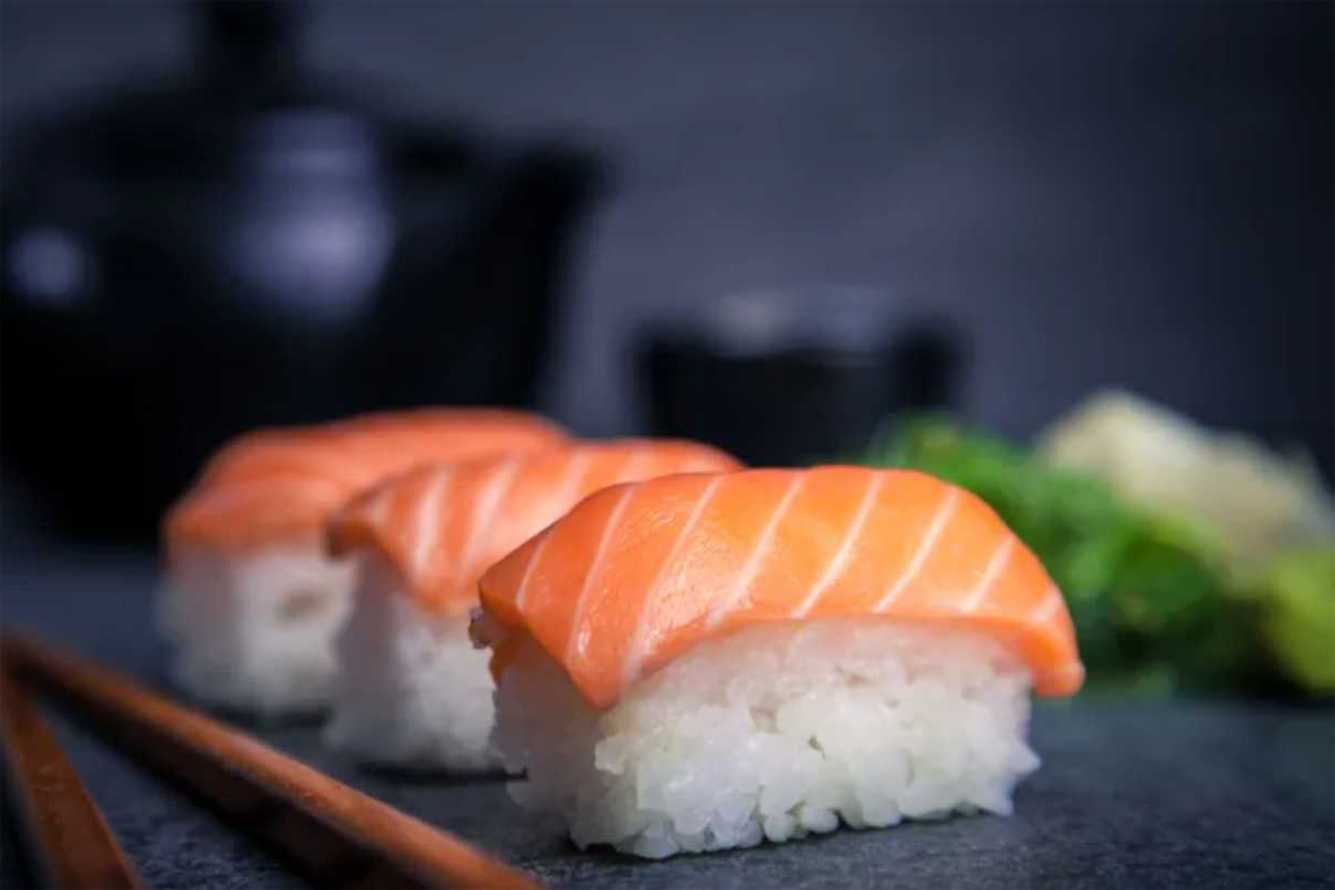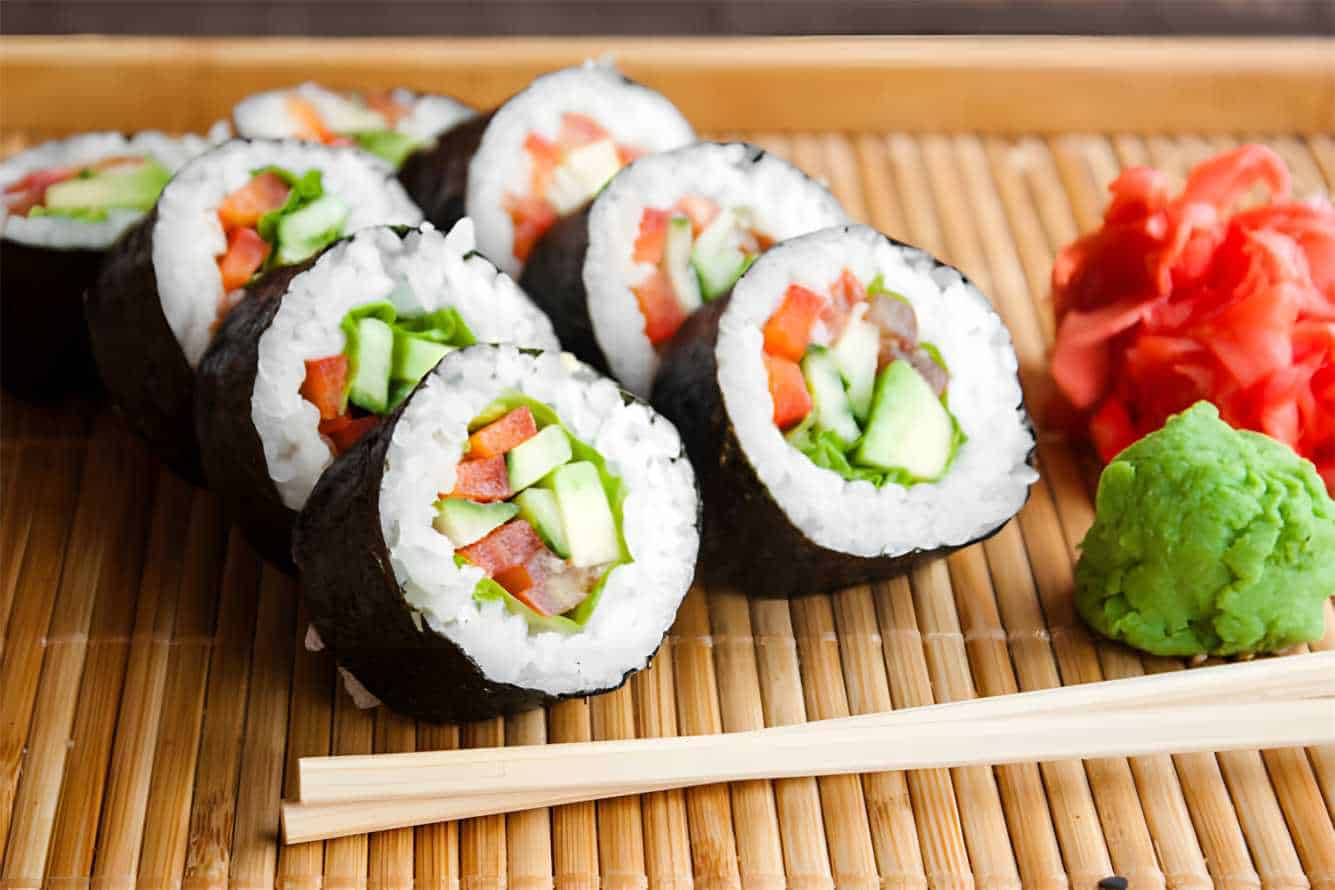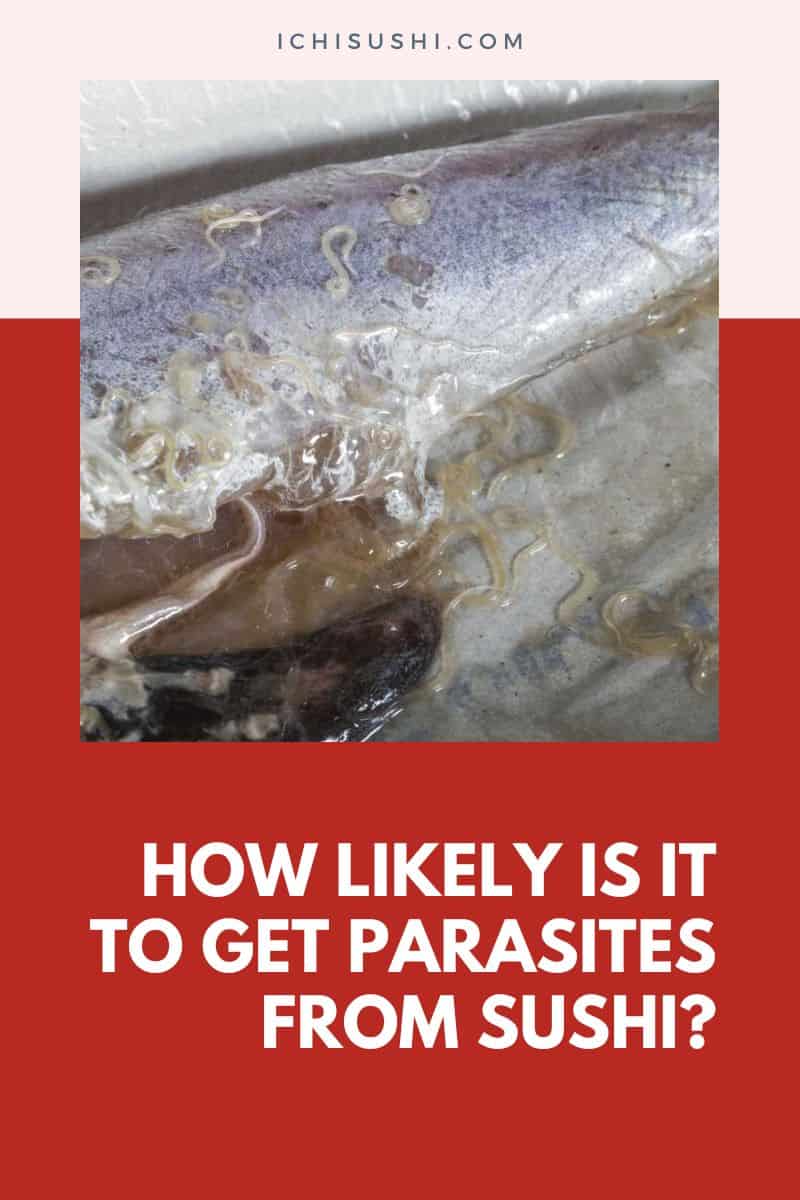Sushi is a delicious delight with lip-smackingly tasty ingredients to satisfy our palates. However, discussion forums on the internet are tackling a controversy about the snack: how likely is it to get parasites from sushi?
This article will guide you on everything you need to know about sushi and sushi parasites.
If you’re a sushi lover or you’d like to learn all about sushi, keep on reading.
Sushi Ingredients
Sushi remains to be a popular dish. Originating from Japan, sushi is one of the favorite snacks of many people.
There are five various types of sushi, which use different ingredients and preparation styles. While raw fish is the most known ingredient, not all sushi utilizes raw fish.
Here are the different ingredients used in making sushi:
- Sushi rice: Sushi rice can be medium-grain white rice, short-grain rice, or brown rice. The rice used should be lightly seasoned with vinegar.
- Nori: Nori is a dried seaweed mainly used in cooking Japanese dishes. It contains nutrients like calcium, iron, and magnesium. Other nutrients in nori include phosphorus, selenium, manganese, and zinc.
- Avocado: Avocado is one of the popular toppings for sushi. It gives a healthier take on the traditional sushi roll. It has been widely accepted and used in specialty rolls, like the California Roll and the Rainbow Roll.
- Wasabi: Some say eating sushi wouldn’t be complete without wasabi. Wasabi is a spicy ingredient that elevates the flavors of fish, accentuating it to another level.
- Soy sauce: Soy sauce gives sushi a salty flavor. Some people love dipping sushi in soy sauce to enhance its flavor.
- Raw fish: Raw fish is the most common ingredient in sushi. Tuna is the top choice of raw fish to go with the roll.
- Vegetables: While raw fish is one of the traditional ingredients of sushi, the dish can still be made without meat. Some people prefer vegetables to mix and match fillings in their sushi. The most common vegetables used in making sushi are cucumbers, mushrooms, bell peppers, and carrots.
But why do some people prefer vegetables over raw meat?
There has been controversy that eating sushi with raw fish was found to be extremely risky. According to the University of Washington News, sushi parasites have multiplied 283 times since the 1980s.
However, the question is, how likely is it to get parasites from sushi?
How likely is it to get parasites from sushi?
Doctors say that the odds of getting a parasitic infection from sushi are unlikely.
Sushi lovers were worried when news broke about anisakiasis. Anisakiasis is an illness caused by eating foods with parasites. It showed a rise in Western countries.
The good news is New York gastroenterologists assure us that there’s not much to worry about. Thankfully, it is rare to get parasites from eating sushi. So don’t drop your chopsticks!
Do all types of sushi have sushi parasites?
No, not all sushi has parasites. It’s a common misconception that all types of sushi contain raw fish, which can be a source of parasitic infection. However, some sushi does not have raw meat at all.
But even so, eating sushi with raw fish does not mean you’ll get a parasitic infection. As mentioned earlier, that case is rare. It can happen if the ingredients have been mishandled, or the fish has not been frozen.
Is tapeworm common in sushi?
Tapeworms are common in mishandled raw meat. It is one of the most common parasites found in raw or uncooked food.
It is unpleasant, but sources say that tapeworm from sushi is relatively harmless. While sushi tapeworm causes less harm than other parasites, it can still cause gastric issues and allergic reactions.
Tapeworms from any raw food can obstruct a human’s intestine. In fact, it can reach lengths of 25 meters! Thankfully, this type of sushi parasite can be easily treated with oral medications.
Finding a good, reputable restaurant reduces your chances of getting sushi parasites like tapeworms.
How to prevent getting sick from sushi parasites
While the odds of getting a parasitic infection from sushi are low, there are ways you can follow to reduce the chances of sushi parasites further.
Here are tips you can try for safe and healthy sushi dining:
- Chew your food well: Chewing your food well decreases the chances of sushi parasites infecting your gut by exposing them to stomach acids and enzymes. If you swallow a large bite of sushi at once, your digestive system may not be able to penetrate if parasites are present.
- Dip your sushi in hot sauce, ginger, and wasabi: Hot sauce, ginger, and wasabi can kill the parasites present in your sushi because they are spicy and acidic.
- Freeze the fish: If you’re making your sushi at home, make sure to freeze the raw fish before eating. Freezing raw fish in a freezer for at least 15 hours can prevent parasites. According to Chattoo, nothing can live at that temperature from a doctor’s point of view.
- Choose “sushi–grade” fish: Only buy from reputable market shops and choose thinly-sliced fish suitable for sushi. You don’t want to be eating meat and suddenly realizing it’s not good for your sushi!
- Eat at reputable sushi restaurants: It’s a no-brainer that you should only eat from trusted restaurants. We recommend reading reviews online to determine if a restaurant is an excellent choice or not. If given a chance, you can ask them directly about their sushi handling and preparation, too.
- Google can be your best friend for enjoying safe and healthy sushi: You can do a quick search and read about reputable restaurants and shops. You can also gather more information about seafood processors, fishing, and FDA regulations. Messaging restaurants and stores directly is also a helpful tip to ensure you eat clean and safe fish.
How to spot sushi parasites
One of the best ways to prevent getting sushi parasites is to learn how to spot worms. While some consider it obvious to detect parasites in your sushi roll, some have a hard time as parasites can be too small and thin.
Sushi parasites are long, thin, moving strands. They may be in red, white, brown, or pink.
If you’re curious, you can take a look at this video to see what salmon worms look like. You can also try watching this clip if you want to know what yellowtail worms are.
And we’d like to warn you, these videos can be gross and disturbing! Only click the links if you are 100% curious about these sushi parasites.
Alternatives to raw fish sushi: 8 Sushi types without raw fish
What’s spectacular with sushi is that you can make a lot of variations of the dish. With various ingredients, you can spin traditional sushi into something even more delicious and creative.
Here are alternatives to raw fish sushi you might like:
- California Roll: California roll is a popular sushi recipe that sushi fans love. This roll uses avocado and imitation crab sticks. Being a type of uramaki, it is considered an inside-out sushi roll. Its seaweed wrap is on the inside, unlike most sushi types.
- Spam Musubi Sushi: Spam musubi sushi is a well-known delight in Hawaii. This sushi recipe uses marinated cooked Spam inside the sushi, wrapped with yummy dried seaweed.
- Vegetarian Sushi: If you don’t like meat, vegetarian sushi is for you. Veggies you can try adding to your sushi include cucumbers, thin bell pepper strips, mushrooms, thin carrot strips, and avocado slices.
- Pate, Lettuce, Shrimp Sushi: Have you ever heard of the PLS roll? PLS stands for pate, lettuce, and shrimp. These three are used to create a sushi recipe without raw fish. It is a creamy and delicious sushi roll you should try.
- Smoked Salmon Sushi: Even beginners can prepare smoked salmon sushi. It is a popular type of sushi, great for newbies. Another good thing about this quick recipe is the cheap ingredients. There are no risks for this type of sushi, and it tastes fantastic, with an excellent complement of flavors.
- Epic Bacon Roll: Slices of bacon make good sushi too! The bacon strips are used to wrap the sushi roll and keep the sushi rice in place. If you’re not keen on raw meat and vegetables, the epic bacon roll is a must-try.
- Dragon Roll: Like the California roll, the dragon roll is an example of uramaki sushi. It is an inside-out sushi made with avocado, unagi, and tempura. It is made to look like a dragon, hence its name. The slices of the avocado are layered to look like dragon scales.
- Sweet Potato Sushi Roll: Another unique type of sushi is the sweet potato sushi roll. This sushi uses roasted sweet potatoes, making the dish a vegan-friendly snack.
Summary
So, how likely is it to get parasites from sushi? Thankfully, the odds of getting a parasitic infection from eating sushi rolls are low.
Sushi fans can celebrate that! Eating sushi is safe as long as all precautions are taken. But if raw fish sushi isn’t your favorite, there are still many sushi variants you can enjoy.

Hiroshi Nakamura, a Tokyo-born sushi chef turned US-based writer and critic, is the voice behind ichisushi.com, blending traditional sushi wisdom with modern insights.

